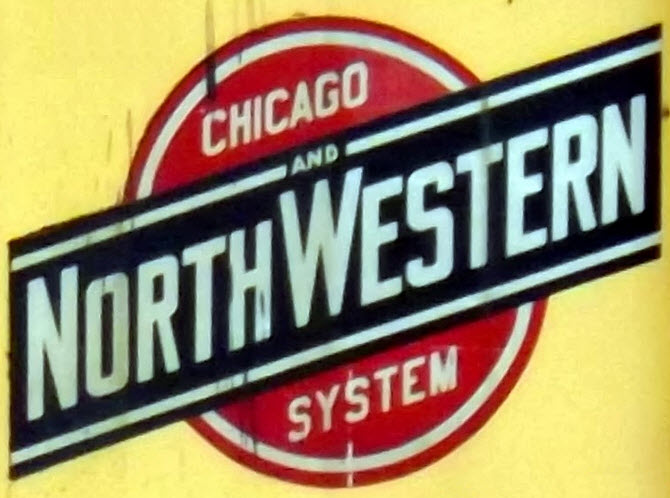
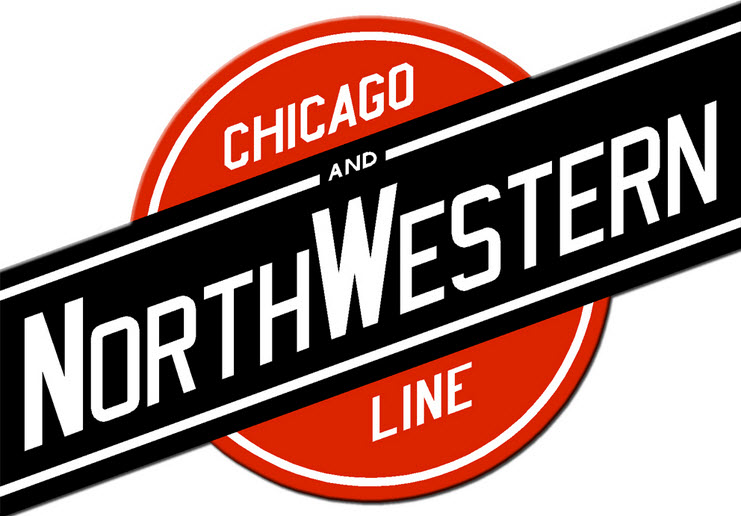
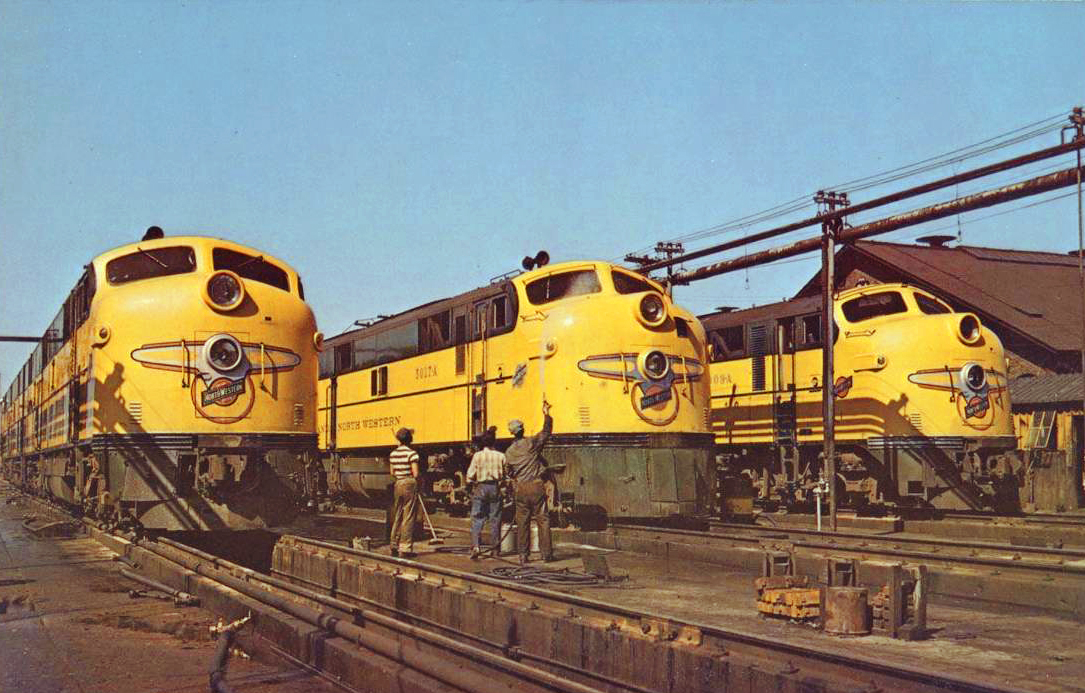
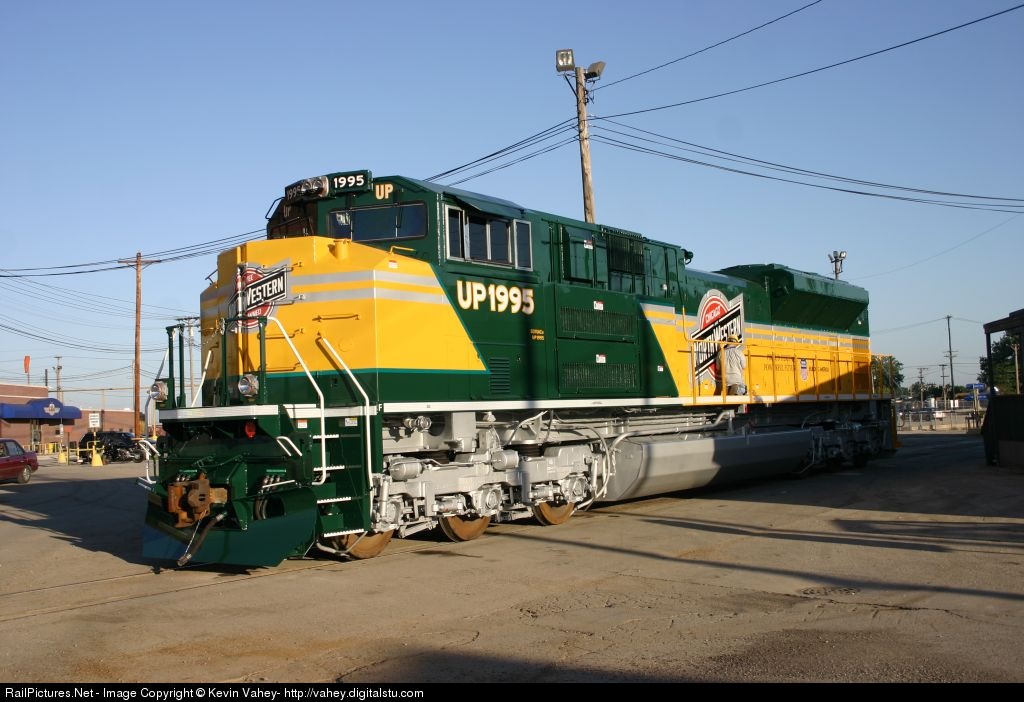
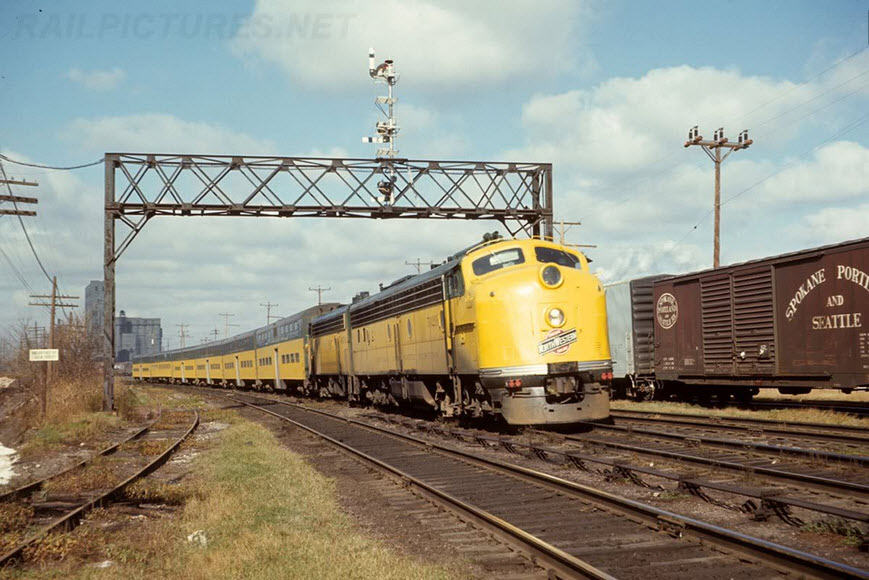
![]()





SIGNAL ASPECTS
of the
CHICAGO and
NORTH WESTERN RWY
from Rulebook Dated
December 1, 1929
RAILFAN GUIDES HOME
RAILROAD SIGNALS HOME
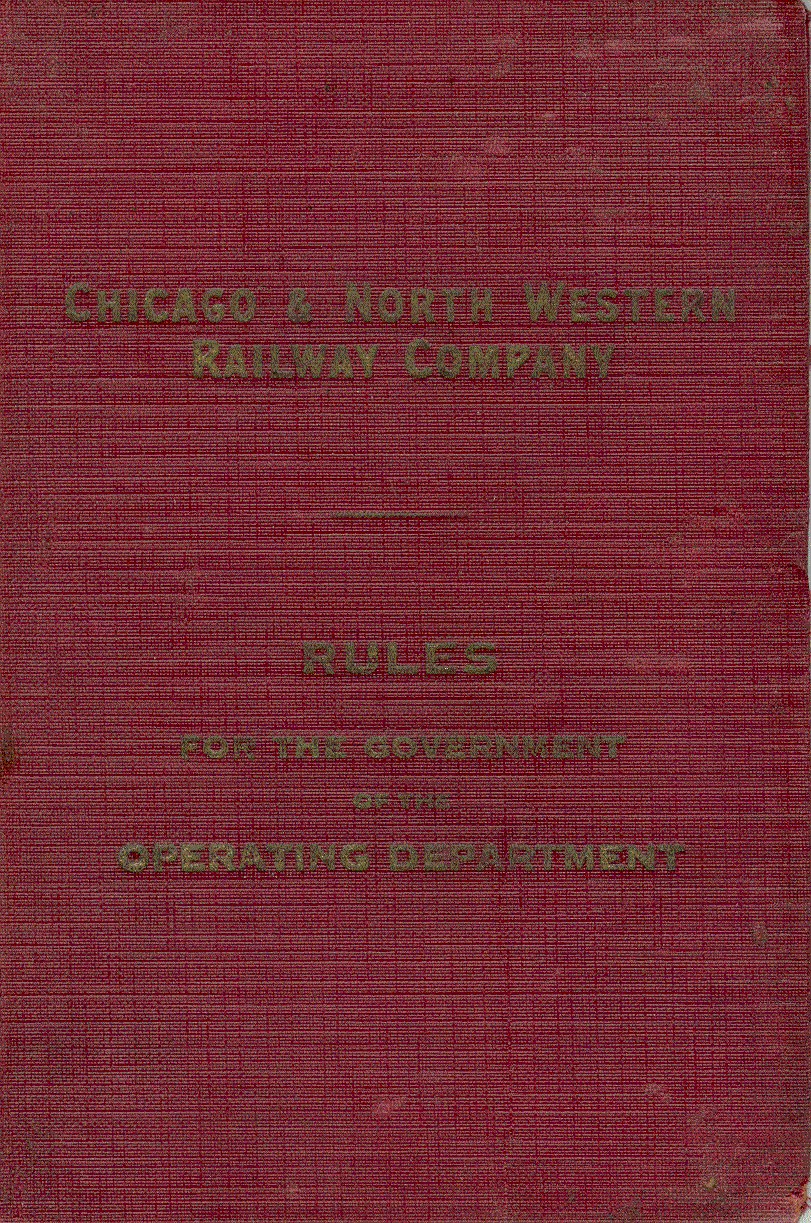
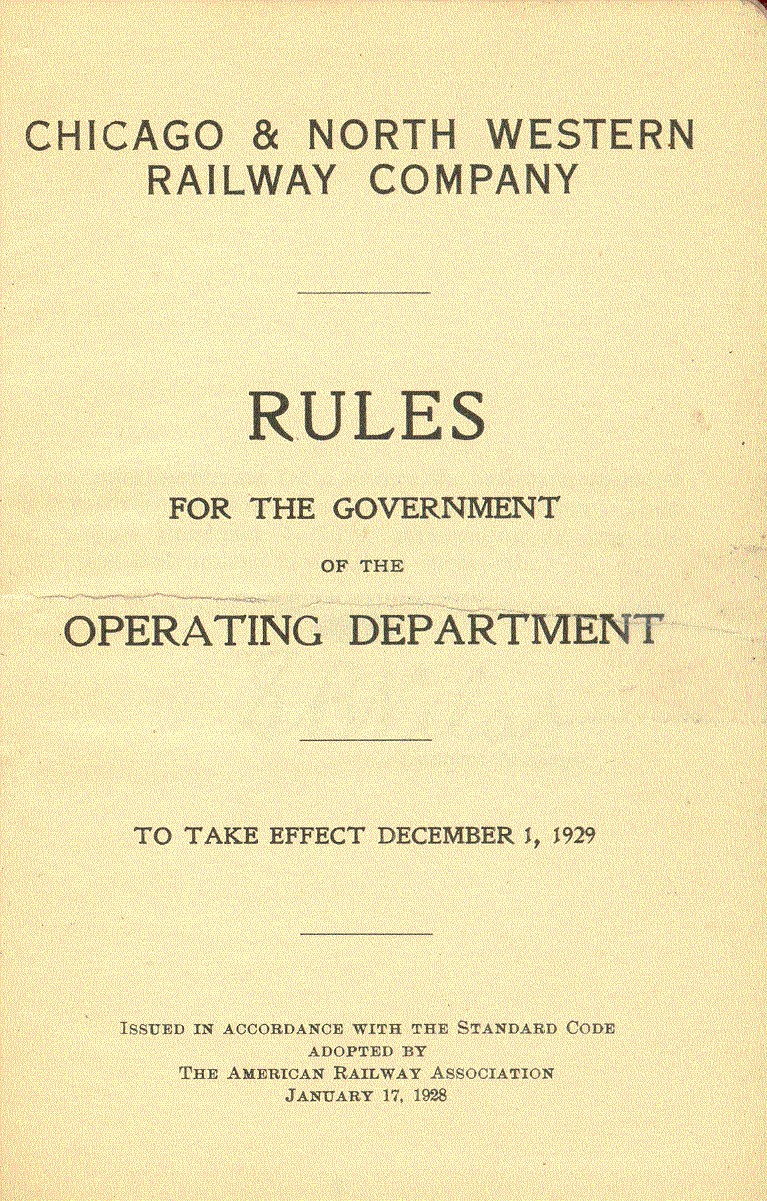
The CNW laid out it's rulebook a little differently than what we are accustomed to today. First, all of their rules covering a certain type of signal all fell under the same rule number, but had a different letter designation, Second, they divided the sections in 501 for Automatic Block Signal Rules.... section 502 for "Banjo" signals.... section 601 for Interlocking Signal rules, altho there is a second set of rules for 601B and 601C to cover signals with Smashboards.... section 602 covered lower quadrant semaphores.... and section 603 covered different set of semaphore signals.
Back then, the CNW had a wide variety of signals..... It must have been great to be a railfan back then, especially if you had a thing for signals.
The rulebook I have was torn in half on the inside, so the pages had to be taped back together for scanning. I also put together a set of new drawings, which are to the right of the scanned pages.
Also note, that the rules start with the most restrictive signals, and then work their way down.... Stop, Stop and Proceed, Approach, and then Clear. After Clear come the other variations.
Fellow signal-fan Eric Pedersen writes with additional info on C&NW signals:
The Chicago & North Western's fixed signal era started out, like most roads, in the two-position days. And, like most roads, C&NW employed red for danger, stop; green for caution, go slowly and look out; and white for safety, go on. (Actually, before the green-for-caution era, the C&NW was one of the last holdouts of blue-for-caution, but that was before fixed signals.)
Of course, the
deficiencies of white for safety were becoming apparent by the late 19th
century, so the C&NW switched to green for safety, leaving them without a
suitable color for caution, until their signal engineer E.C. Carter decided that
caution would be displayed by red and green simultaneously, in 1893 (This, as
you probably know, was because a suitable signal-yellow glass could not be
manufactured, until two years later, when the New Haven had it specially
developed).
So, you have:
- The two-position mechanical interlocking semaphores, including the red-green
distant signal
- The two-position Hall electromagnetic disk signals, also including the
red-green distant signal
When the C&NW adopted 3-position, upper-quadrant, electric semaphores, red/green
for caution was still their standard, and they developed their own unique funky
spectacle that you see in the rule book. The semaphore used a red and
green lamp; the spectacle was designed to obscure the green lamp when
horizontal, show both lamps at 45 degrees, and obscure the red lamp at vertical.
Thus, the next development, as you see in the rulebook.
By circa 1915, yellow for caution had become an established practice, and new
C&NW semaphores were of the standard type which you also see in the rulebook,
and from that time were used in all new signal works. At locations where
the older style needed maintenance, the spectacles were simply modified to
display red, yellow, and green, and the double-lamp done away with. Some
lasted in this form for decades; the last holdouts, around 20 at the throat of
the North Western commuter terminal in Chicago, lasted until 2001.
The Hall disk
signals were still in use up to 1935 (at least on the Chicago-Milwaukee commuter
line.)
By 1927 the C&NW had installed a cab signal system on its main western route
from Chicago to Council Bluffs, Iowa.
Now on to the color light signals! These began to be installed in the 20's
on the C&NW's commuter routes out of Chicago, and other locations. They,
too, were of a unique style, with the heads being horizontally arranged.
The horizontally arranged GRS Type E signals were another product of C&NW
innovation: they believed sighting was best when all aspects were at the same
height (I've heard from engineers that it doesn't make any difference).
Many such signals can still be seen in the Chicago area.
People wishing to view some really rare signals of C&NW heritage still in use
ought to check out the North Western station in Chicago (now the Ogilvie
Transportation Center). Although the amazing signal bridge loaded with
semaphores was replaced in 2001, a rare type of semaphore dwarf signal is still
used on some lines leading out of the platform pockets, consisting of a white
disk with a semaphore arm painted on, and inset spectacles. It works just
like a dwarf semaphore, but is really a moving disk rather than a moving arm.
Such signals were the standard dwarf signal in England, but were very, very rare
in America. The ones in use at Ogilvie date back to the 1910's or 20's.
Eric, Thanks for this great bit of history! He has a 1919 edition of the rulebook, and further states: "The aspects are practically the same, except for older terminology (e.g., "Restricting" = "Low Speed Caution", etc), and there are no color light signals!
Automatic Block System Rules -- section 501
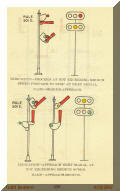
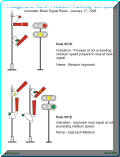 Rule 501D -
Medium Approach..... and Rule 501E - Approach-Medium
Rule 501D -
Medium Approach..... and Rule 501E - Approach-Medium
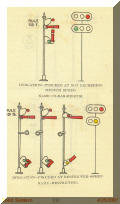
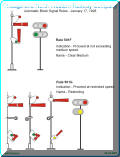 Rule 501F - Clear
Medium..... and Rule 501G - Restricting
Rule 501F - Clear
Medium..... and Rule 501G - Restricting
Automatic Block System Rules for Banjo Signals -- section 502
Rule 502AA - Stop and
Proceed
Rule 502B - Approach
Rule 502C - Clear
Interlocking Rules -- section 601
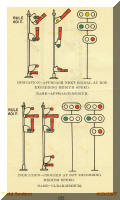 Rule 601E - Approach
Medium.... and Rule 601F - Clear Medium
Rule 601E - Approach
Medium.... and Rule 601F - Clear Medium
Interlocking Rules -- Signals with Smashboards -- section 601
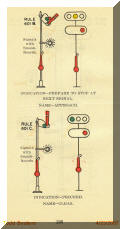 Rule 601B - Approach..... and Rule 601C - Clear
Rule 601B - Approach..... and Rule 601C - Clear
Interlocking Rules -- Lower Quadrant Semaphores -- section 602
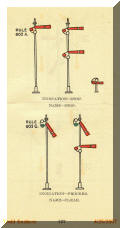 Rule 602A - Stop.....
and Rule 602C - Clear
Rule 602A - Stop.....
and Rule 602C - Clear
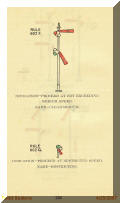 Rule 602F - Clear
Medium..... and Rule 602G - Restricting
Rule 602F - Clear
Medium..... and Rule 602G - Restricting
Interlocking Rules -- Other Semaphores -- section 603
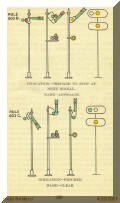 Rule 603B -
Approach.... and Rule 602C - Clear
Rule 603B -
Approach.... and Rule 602C - Clear
New 04/25/2007..... Last Updated: 11/30/2016